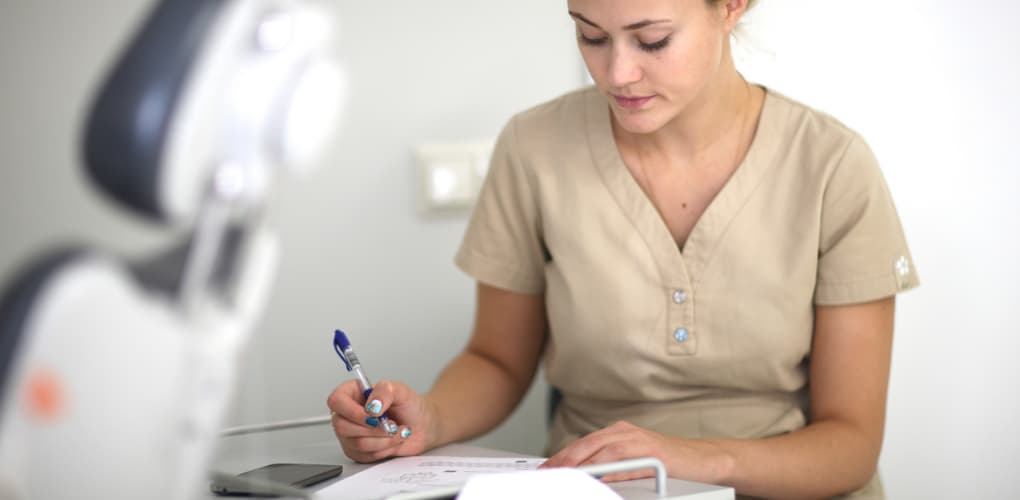< Back to Publications & Resources
Disposing of Paper Dental Records and Imaging: Best Practices for Dentists

While many dentists have already completely embraced the electronic dental record, some practices still find the need to dispose of paper records and imaging. The following is some general information to consider when destroying paper dental records and imaging.
Regulatory Requirements for Retaining Dental Record
The New York State Department of Health requires dental professionals retain dental records and imaging (“records”) from adult patients for six years. Records for minor patients must be maintained for at least six years and for one year after the minor patient reaches the age of 21, whichever is longer. It is, however, recommended that dental records be retained for 10 years from the date of receipt of the last claim for payment. The longer time period is recommended in light of state and federal statutes and regulations pertaining to malpractice and offenses, such as insurance fraud. For deceased patients, records should be kept for six years after death.
Keep in mind that failure to retain original dental records for the above time periods is considered professional misconduct and can result in fines, monetary penalties and licensure actions for violations.
HIPAA Requirements for Shredding Dental Records
There are many things to consider when moving dental records out of storage for destruction. Initially, any dental records that are moved out of storage must be documented on a log. HIPAA requires providers to shred all documents that contain social security numbers; names and addresses; birthdates; medical histories; prescriptions; test results; and vaccination records. As a provider, you must always remain mindful of patients’ protected health information.
Options for Destroying Dental Records
There are several ways to dispose of dental records once you identify which records can be destroyed. Here are a few suggestions:
In-House Shredding: If you decide to destroy dental records in-house, a HIPAA compliant cross-cut shredder is recommended. It is imperative that the shredder you purchase meets the standards set forth in the HIPAA regulations. HIPAA requires documents be shredded so they are not only unreadable but also cannot be recreated. This option can become expensive due to the purchase of the shredder, as well as the labor costs of manually shredding dental records.
Burning: While burning guarantees complete destruction of paper records, it is not an eco-friendly option.
Off-site Shredding: When utilizing a professional shredding service, you will need to execute a Business Associates Agreement. Typically, dental records would be placed in a locked bin and retrieved by a representative of the shredding service. The bin is transported to a facility for processing. The company should provide you with a Certificate of Destruction after each shredding service.
Mobile Document Shredding Service: With this option, you will also need a Business Associates Agreement. A mobile service will come to your office at which time both a representative of your practice, as well as the service, will oversee the process. Once the shredding is complete, a Certification of Destruction should be provided. This appears to be the most common and cost-effective way to appropriately destroy dental records.
All the same HIPAA rules and regulations apply to the disposal of imaging. Imaging can be destroyed by shredding, burning or pulverizing the films so they are unreadable. The most secure way to destroy imaging is to hire a professional service. As with paper records, you will need a HIPAA Business Associate Agreement and a Certificate of Destruction.
If you are scanning original paper records into an electronic dental record system, MLMIC recommends retaining the paper records for at least 90 days. We recommend thoroughly examining all records before scanning to determine if any of the records are double-sided. If a patient has had an untoward outcome, or a request for records has been received from an attorney or government agency that signals a potential claim, lawsuit or government investigation, the original paper records must not be destroyed and should be locked up and retained until the claim lawsuit or investigation is closed.
For specific questions about shredding paper dental records or destroying images, policyholders can contact the MLMIC Legal Department at (844) 667-5291. You can also submit a specific question by emailing hotline@tmglawny.com.
Dental professionals can stay up to date on the latest risk management guidance and alerts by monitoring the MLMIC Dental blog, The Scope: Dental Edition and Dental Impressions and following us on Twitter and LinkedIn.



